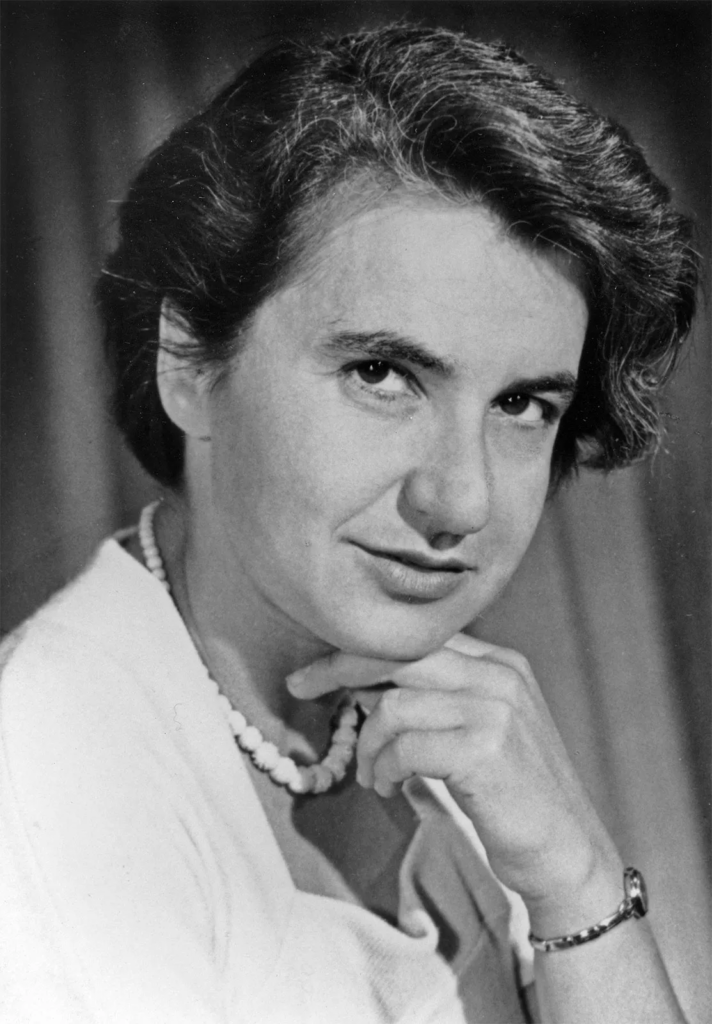by Rami Major
From crime shows tracking down killers to the action movie Rampage with gene-edited predators, DNA and scientific technology have infiltrated the pop culture space. However, we didn’t always know as much as we do now about the DNA molecule. This year, 2023, marks 70 years since the structure of DNA was discovered. Throughout much of history, this discovery was largely attributed to two scientists: James Watson and Francis Crick, who won the Nobel Prize for this advancement alongside Maurice Wilkins. In 1953, Watson and Crick announced that the structure of DNA was a double-helix, which you may have learned to picture as a twisted ladder. When Watson and Crick created their famous model of the DNA molecule, they failed to acknowledge the significant contributions of another scientist working on solving its structure: Rosalind Franklin.

Rosalind Franklin received her PhD from Cambridge in 1945 and later conducted research using the x-ray diffraction technique, where researchers focus x-rays at a molecule, allowing them to glean clues about its structure. Franklin took increasingly higher quality images of DNA molecules in collaboration with graduate student Raymond Gosling, including their famous Photo 51.
Without Franklin’s knowledge, colleague Maurice Wilkins showed this image to Watson and Crick, who were also working toward understanding the structure of DNA. This picture helped Watson and Crick understand that DNA was helical in nature.To form their double-helix DNA molecule model, Watson and Crick relied on both Franklin’s x-ray photo and other scientists’ discoveries. Although she was not acknowledged at the time of the discovery, Crick later said that Franklin’s contribution was crucial to their understanding of DNA’s structure. Unfortunately, Franklin died from ovarian cancer at a young age, never learning of her role in contributing to our understanding of the DNA molecule. Watson, Crick, and Wilkins were awarded the Nobel Prize in Physiology or Medicine for their discovery in 1962. Because Franklin had passed away several years earlier, she was ineligible for the prize and not acknowledged for her contribution.

In the decades since DNA was discovered, the scientific community and society as a whole have sought to find ways to acknowledge Rosalind Franklin’s contributions to the field of molecular biology. Many podcasts, documentaries, books, and articles attempt to shed light on the role she played and discuss the nuances of her exclusion from initial acknowledgements of the discovery. In science, women are given less credit than men, and STEM fields have systematically and historically excluded women, minorities, and people with disabilities. Significant effort is needed to create an environment where all scientists feel valued and acknowledged, because science benefits from diverse perspectives–when diverse perspectives come together to solve a problem, innovative solutions can be found.
